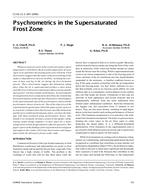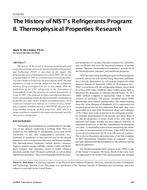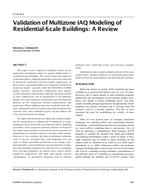-
-
Available Formats
- Options
- Availability
- Priced From ( in USD )
-
Available Formats
-
- Immediate download
-
$16.00Members pay $7.00
- Add to Cart
Customers Who Bought This Also Bought
-

CI-01-04-1 -- Three-Dimensional Thermal-Hydraulic Analysi...
Priced From $16.00 -

CI-01-11-3 (RP-1060) -- High Temperature Properties of Mo...
Priced From $16.00 -

CI-01-11-1 (RP-1094) -- Psychrometrics in the Supersatura...
Priced From $16.00 -

CI-01-09-5 -- The History of NIST's Refrigerants Program:...
Priced From $16.00
About This Item
Full Description
This paper reviews empirical validation studies of the application of multizone indoor air quality (IAQ) models to residential-scale buildings. This review focuses on empirical verification efforts, although models have also been subjected to analytical verification and inter-model comparisons. In most reports, experimental data were compared to predictions of only one model - typically, either the CONTAM or COMIS models. However, inter-model comparisons have demonstrated consistency between these and other multizone models so most comparisons can be generalized to all multizone models. Few of the empirical verifications reported statistical analyses of the comparison between measurements and predictions. Where sufficient data were available in the literature, additional statistical analyses have been performed and reported. Also, most published reports did not address the issue of measurement uncertainty. No single reported multizone IAQ model validation effort can be considered to be complete due to limitations in scope, inadequate detail describing experimental and/or modeling procedures, lack of rigorous statistical analysis, inclusion of only small ranges of airflows and concentrations, questions on independence of validation datasets, and other shortcomings. However, if one considers the body of published validation work, it may be concluded that a knowledgeable user can expect to make reasonable predictions of air change rates, interzonal flows, and contaminant concentrations for residential-scale buildings dominated by stack-driven or ventilation flows with inert pollutants. In contrast, more work is clearly needed for applications with high wind speeds, reactive contaminants, or specialized situations such as ambient Additionally, future model validation efforts will be more useful if more statistical analyses are performed and if more detail on both the measurements and modeling are reported.
Units: SI





